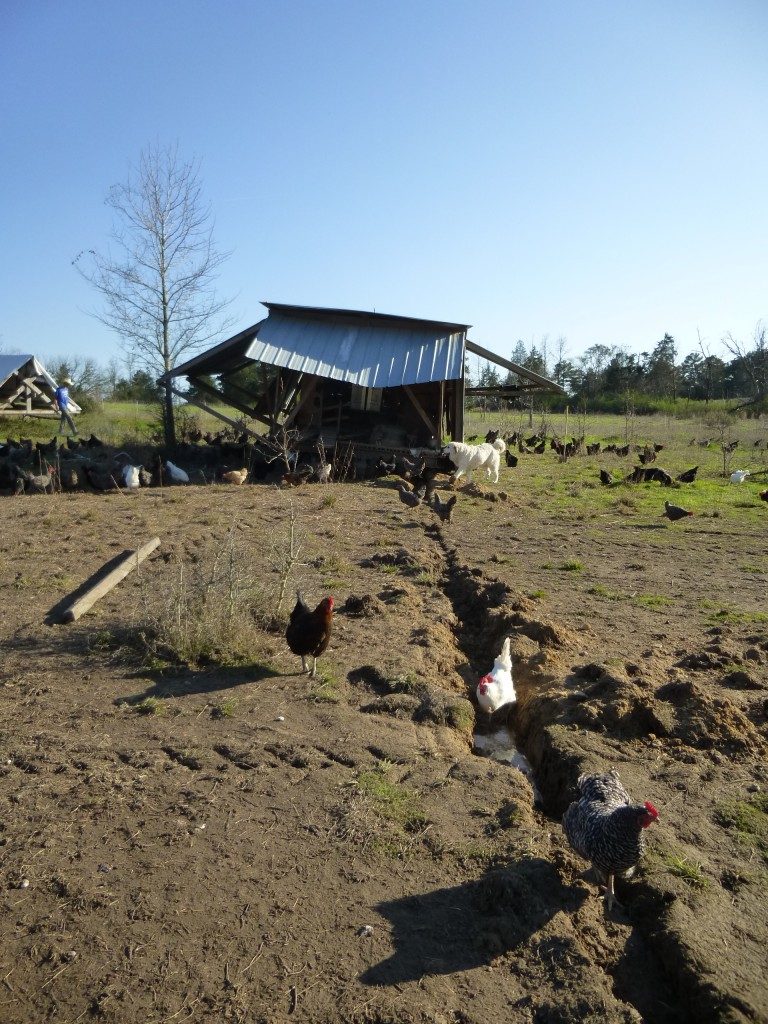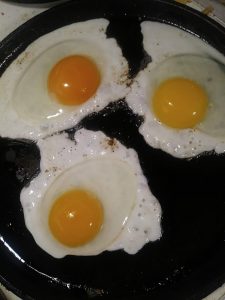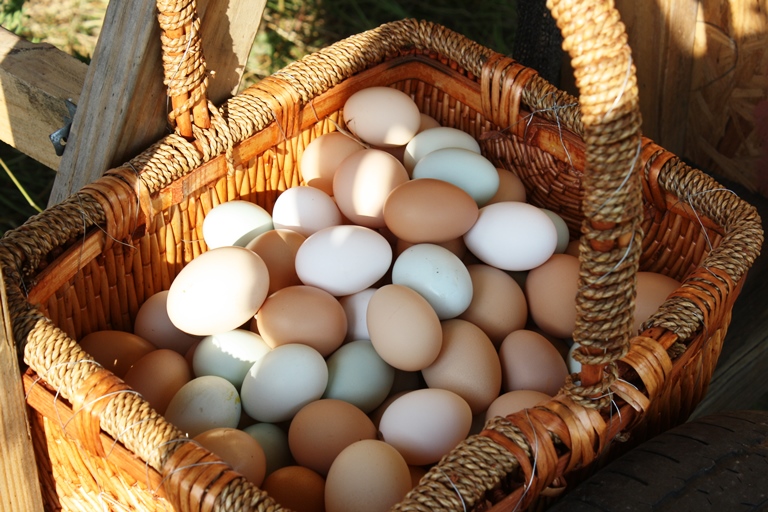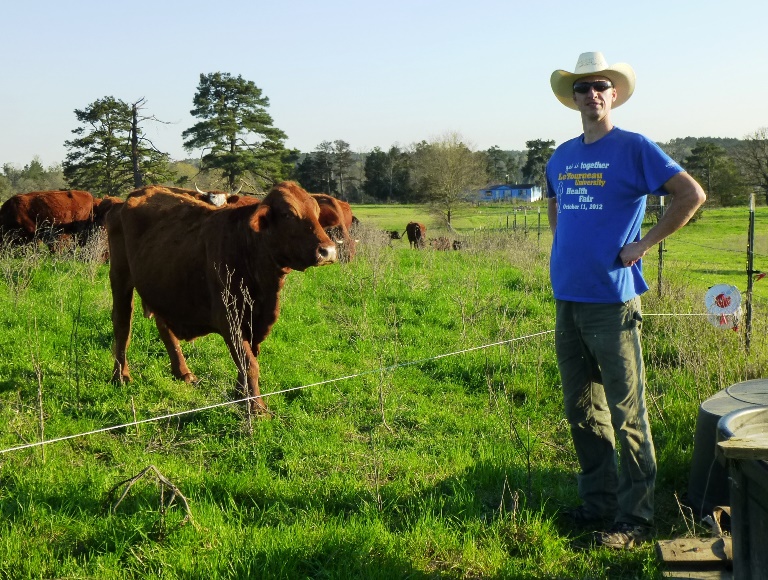Someone is trying to trick you.
They have started using this marketing word, and it’s working. What’s the word?
Local.
“Local” is the new “healthy.”
But my, oh, my, how the falsehoods abound.
(Quick disclaimer: I don’t think “local” is the only criteria for good food. I think rearing practices trump nearness of raising critters or veggies. Every crop-duster and chicken CAFO is local to somewhere. But we definitely need to address this Local Love issue because I think it has gotten way out of hand.)
Take, for example, the giant Geico billboard we saw while driving on a delivery one day. It has the famous little lizard, and it says, “We’re local!”
What does that even mean? That they have a local office you can go spend money at that ends up at HQ in some huge metropolis out of state, just like every other national multi-billion dollar company? Does it mean they have a local phone number so you don’t have to pay for long distance….which pretty much doesn’t exist anymore anyway, except for international calls? It’s so ambiguous that it’s practically meaningless, and yet it sounds so good.
Following is another good example of the misuse of the term.
A pasture-based farmer colleague of ours near the Ozarks in Arkansas snapped this photo of some apple cider for sale. The sign on the display says in prominent lettering, “Farm Fresh. Locally Grown.” The subheading states, “Proudly Supporting Ohio Farmers.”
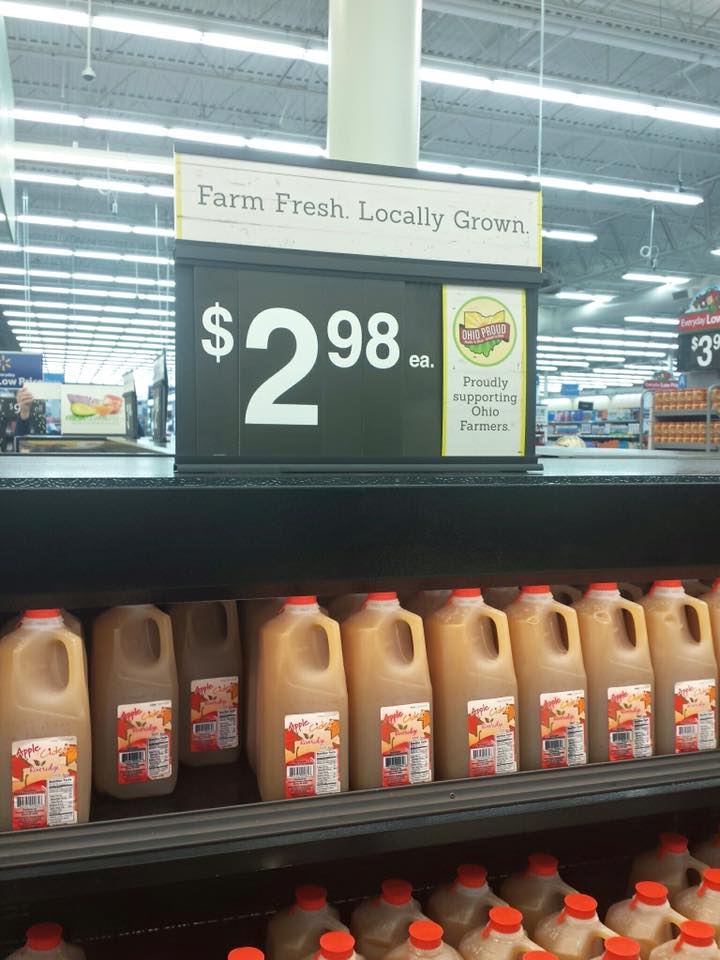
I guess management forgot that they are a mere, oh, 700 miles away from Ohio. Then you check out the fine print and discover that the cider is actually a product of Michigan! If any of the signage is even remotely true, you’re looking at a distance traveled of over 1200 miles. Thank goodness our “local” schools and shopping centers are closer than that!
Grocery stores are especially bad about abusing the attractive marketability of supporting local farmers. Matt once stopped into Kroger and noticed, again, the prominent “We support local farms!” signage, which you see at so many stores nowadays.
We’re always looking for more locations to serve our customers via retail sales–we’d love to sell our products through Kroger! So Matt decided to ask about it. He flagged down a manager and introduced himself as a local farmer, and inquired about how to initiate the process to become a vendor for their store. The manager looked dumbfounded and said, “I have no idea.” She even went to ask their buying manager there at the store, and his reply was the same. They were so unfamiliar even with the concept of buying from local farms that they didn’t even know where to begin or whom to ask.
Question: If these stores are really selling these wonderful local products from dozens or maybe even hundreds of local farms–because you know, by nature of buying local, there have to be LOTS of farms spread across the nation–why don’t the people who DO THIS FULL TIME know how to get an actual real-live local farmer in touch with the right people to start selling his real-live local products there?
I’ll tell you why. It’s not really happening. They are trying to trick you.
It’s not just grocery stores.
There are a lot of restaurants and restaurant distributors using the same sort of marketing language. They get a couple of poster children farmers, and maybe they really buy a few things from them (or maybe not…) and then they head straight for mainstream, Big Ag suppliers.
Why don’t they just do what they say they’re doing?
I don’t think it’s that hard to figure out. People like the idea of buying local. They like even better the idea of local being fresher and healthier. But money talks, right? Bigger farms (aka CAFO operations–confinement animal feeding operations) are cheaper to operate and have economies of scale on their side. Plus there’s that convenient advantage of separating the consumer from the supply chain by moving the supply chain farther away, and so the food system begins to operate like a money laundering operation.
Restaurant Q buys from Distributor X, who buys from Natural Hub Y, who buys from Brokers A, B, and C, who buy from Farm Co-ops H, I, J, K, who buy from some obscure farms out in Farmland that no one really knows much about, and definitely no one ever visits. Somebody said the farms are pasture-based, and we can surely assume that they’re reasonably close by…
I won’t name names, but I know of two in particular, right here in Texas, that tout their “local” and “pasture-raised” products. One sources beef direct from Australia, citing that American producers can’t meet supply and standards simultaneously.
Like I said, I’m not going to name any names, but I’m just going to leave this link right here for you in case you want to read about it.
The other is a restaurant supplier actively marketing their local, pasture-raised farm products in a major Foodie city in Texas. They have a lovely little website with a prominent menu item, “Why local?” and they go on to answer the question by defining local as farms located “within one day drive from [their city.]” OK, so that sounds pretty reasonable. A day trip to the farm, right?
Well, it just so happens that this Texas farm-to-table group uses for its main supplier of pork a co-op of farms …in Iowa.
Is that meeting their definition of local? It’s a 15 hour drive to Iowa without pigs. And navigating downtown Big Texas City with your livestock trailer would add at least another hour or two, not counting stops. I don’t know many folks that can make a 15+ hour drive in one day without livestock!
In college, I moved from my hometown in South Mississippi to Ithaca, New York, to do an internship with a metallurgical testing company there. In the early days of MapQuest, I staked out my route and highlighted my paper atlas, said goodbye to my mother, and started out early. I made it 11 hours the first day, and I was so exhausted and delirious that I could barely order a meal at McD’s before stopping for the night (back before I knew better). I wouldn’t have made it all the way to Iowa in one day… I would not call that “local.”
Now, if you’re my crazy hubby, who once drove from Longview, Texas, all the way to Pittsburgh, Pennsylvania in one go, you might say it can be done. But gee whiz! Who wants to leave at 6 A.M. and arrive at 9 P.M. (not counting stops!) and call that a “local” farm! Not to speak of whether or not they meant that you were supposed to be able to return home in the same day… Buying pork becomes a full-fledged business trip!
By the way, I have forbidden Matt from doing any crazy long driving now. That was back in his “bulletproof” days…
But you can see how ridiculous the use of this term “local” has become. Granted it might not be out of the realm of possibility if we were all “driving” Lear jets around. Lear jets full of pigs for restaurants…
What this trend means is that you, the buyer, must be oh, so cautious, and not get sucked in by the fancy marketing and attractive buzz words. Worse, people often read “local” as synonymous with “grass-fed” or “hormone-free” or a whole host of other non-applicable terms.
How should we define local?
Polyface Farm, home of Joel Salatin and his family, is probably the most well-known farm like ours. A truly loco-centric, rotationally-focused real-deal type farm. They define their local food-shed as those customers that can make a day trip to the farm and back home again after spending a bit of time browsing the farm, viewing the operations, and shopping in the farm store.
So for most folks that means less than a 3 or 4 hour drive. That sounds pretty reasonable to me. Honestly, anything beyond that would just seem ridiculous. I mean, for us, that would mean buying from farms near Houston, or on the other side of Dallas–that far-reaching of a “food-shed” would be a stretch, to be sure, but it could be done if we had no other options. But you bet your biscuits that I wouldn’t be looking at Iowa or Ohio or Michigan for “local food.”
When buying local isn’t possible
Please don’t hear what I’m not saying.
If you have to ship your food in because there really aren’t any decent rotational-pasture-based farms near you, do it. It’s worth it for your health.
If all you care about is low price, and Iowa pork is cheaper than Texas pork, fine. Capitalism wins, right?
But what gets my goat is when companies are deliberately deceiving customers through marketing schemes that say, “We support local farms!” when they really don’t–they’re just like everyone else, buying through the handful of Giant Food Suppliers and giving consumers the illusion of local, small, diversified economies. And finally, even if it really is local, that doesn’t make it healthy.
What if there’s not a good local farm? Simple! Take your signs down!!
How can you know the truth?
The best way to know is to go SEE it. Meet the farmer. Know your source. It’s worth it.
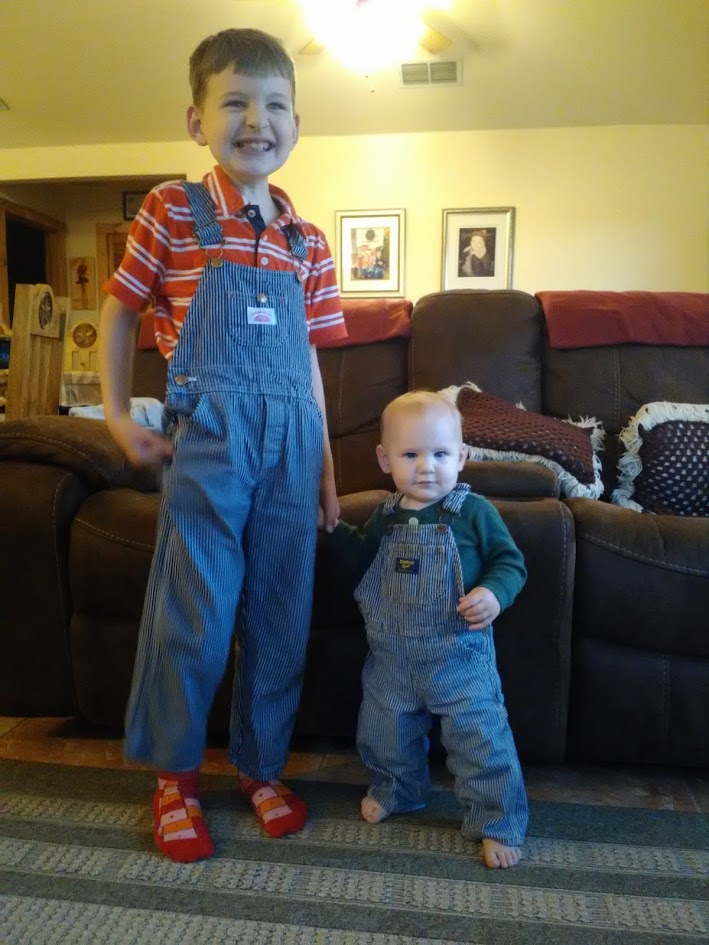
There is good news.
I hate leaving you with all bad news. So here’s the good news. We’ve been working hard to get our products into some restaurants in the area (and of course we so much appreciate all of our local stores that really DO support local farms!). Here are two restaurants that have recently put our pork on their menu. More coming soon!!
Restaurants Featuring Our Products
- Wine Country Bistro in Shreveport, Louisiana
- El Cabo Verde in Shreveport, Louisiana
Our Wonderful Retailers:
- Granary St. in Longview and Tyler
- Vitamins Plus (inside Drug Emporium) in Longview, Tyler, and Shreveport
- Jack’s Natural Foods in Longview
- Sunshine Health Foods in Shreveport and Bossier
- The Farmer’s Wife in Mt. Pleasant
- Flour Child Fine Foods in Texarkana



